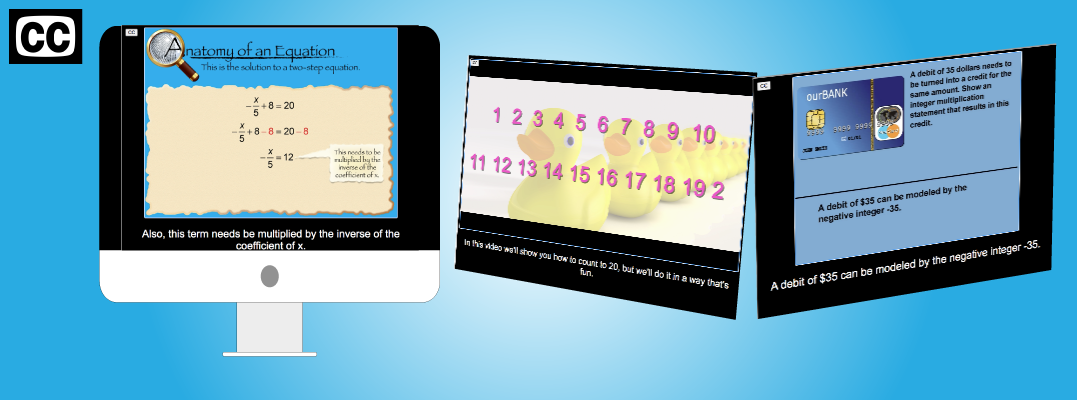Content Showcase: Closed Captioned Videos
Our videos are closed captioned. This isn't just an issue of accessibility but instruction. Try captioned videos with all your students. The captioning provides an additional level of support for your students as they work their way through our video library.
(Want to learn more about our subscription packages? Click here.)
| Title | Thumbnail Image | Description |
|---|---|---|
Closed Captioned Video: Geometry Applications--What Are Prisms? |
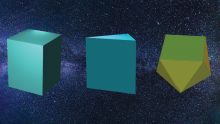
|
Closed Captioned Video: Geometry Applications--What Are Prisms?In this video students learn the basics of prisms and anti prisms. They learn the properties of triangular prisms, rectangular prisms, triangular antiprisms, and rectangular antiprisms. |
Closed Captioned Video: Geometry Applications: 3D Geometry |
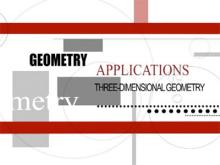
|
Closed Captioned Video: Geometry Applications: 3D GeometryIn this program we explore the properties of three-dimensional figures. We do this in the context of two real-world applications. In the first, we look at the three-dimensional structure of Mayan pyramids. These stair-step structures provide a unique opportunity to also explore sequences and series. |
Closed Captioned Video: Geometry Applications: 3D Geometry, 1 |
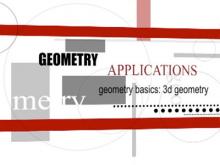
|
Closed Captioned Video: Geometry Applications: 3D Geometry, Segment 1: Introduction.We visit ancient Greece to learn about the Platonic Solids. This provides an introduction to the more general topic of three-dimensional figures. |
Closed Captioned Video: Geometry Applications: 3D Geometry, 2 |
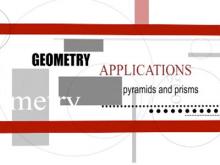
|
Closed Captioned Video: Geometry Applications: 3D Geometry, Segment 2: PyramidsRectangular Prisms. Mayan pyramids are essentially stacks of rectangular prisms. The volume of each successive level is a percentage decrease of its lower neighbor. This introduces the notion of a geometric sequence and series, including an infinite series. |
Closed Captioned Video: Geometry Applications: 3D Geometry, 3 |
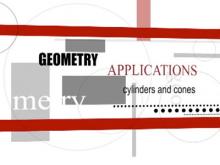
|
Closed Captioned Video: Geometry Applications: 3D Geometry, Segment 3: CylindersThe Shanghai Tower in China is a stack of cylindrical shapes, where each successive layer is a percentage decrease of its lower neighbor. As with the previous section, this introduces the notion of a geometric sequence and series. |
Closed Captioned Video: Geometry Applications: Angles and Planes |
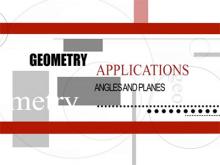
|
Closed Captioned Video: Geometry Applications: Angles and PlanesIn this program we explore the properties of angles and planes. We do this in the context of two real-world applications. In the first, we explore Japan's Himeji Castle and in the process learn about different types of angles and how they're used in a defensive fortification. |
Closed Captioned Video: Geometry Applications: Angles and Planes, 1 |
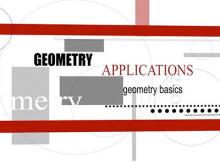
|
Closed Captioned Video: Geometry Applications: Angles and Planes, Segment 1: IntroductionThe observatory in Arecibo, Puerto Rico provides astronomers insights into the structure of our solar system. Geometrically, the solar system relies on the plane known as the ecliptic. |
Closed Captioned Video: Geometry Applications: Angles and Planes, 2 |
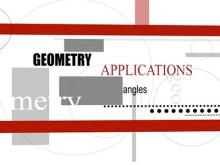
|
Closed Captioned Video: Geometry Applications: Angles and Planes, Segment 2: AnglesHimeji castle in Japan is a marvel of architecture and a startling example of geometry and military science. |
Closed Captioned Video: Geometry Applications: Angles and Planes, 3 |
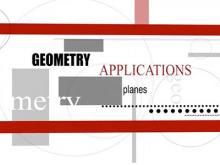
|
Closed Captioned Video: Geometry Applications: Angles and Planes, Segment 3: PlanesIn the Canadian Rockies, the Burgess Shale fossils provide a window to prehistoric Earth. Fossil layers are folded into sedimentary rocks. And sedimentary rocks are examples of parallel planes. This segment uses the properties of planes to analyze fossils. |
Closed Captioned Video: Geometry Applications: Area and Volume |
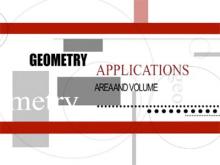
|
Closed Captioned Video: Geometry Applications: Area and VolumeIn this program we look at applications of area and volume. We do this in the context of three real-world applications. In the first, we look at the sinking of the Titanic in the context of volume and density. |
Closed Captioned Video: Geometry Applications: Area and Volume, 1 |
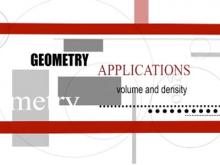
|
Closed Captioned Video: Geometry Applications: Area and Volume, Segment 1: Volume and Density.The sinking of the Titanic provides an opportunity to explore volume, density, and buoyancy. Students construct a mathematical model of the Titanic to determine why it sank and what could have been done to prevent it from sinking. |
Closed Captioned Video: Geometry Applications: Area and Volume, 2 |
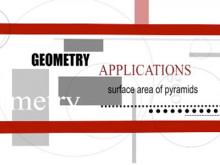
|
Closed Captioned Video: Geometry Applications: Area and Volume, Segment 2: Surface Area.The glass-paneled pyramid at the Louvre Museum in Paris is a tessellation of rhombus-shaped glass panels. Students create a model of the pyramid to calculate the number of panels used to cover the surface area of the pyramid. |
Closed Captioned Video: Geometry Applications: Area and Volume, 3 |
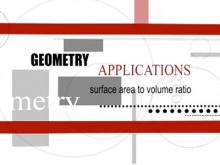
|
Closed Captioned Video: Geometry Applications: Area and Volume, Segment 3: Ratio of Surface Area to Volume.The Citibank Tower in New York City presents some unique design challenges. In addition it has to cope with a problem that all tall structure have to deal with: heat loss. |
Closed Captioned Video: Geometry Applications: Circles |
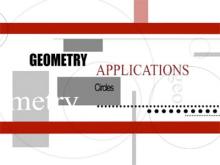
|
Closed Captioned Video: Geometry Applications: CirclesIn this program we explore the properties of circles. We do this in the context of two real-world applications. In the first, we look at the design of the Roman Coliseum and explore how circular shapes could have been used to design this elliptical structure. |
Closed Captioned Video: Geometry Applications: Circles, 1 |
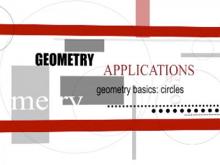
|
Closed Captioned Video: Geometry Applications: Circles, Segment 1: The Basics of Circles.We visit Chaco Canyon in New Mexico to explore the circular kivas and in the process discover how circular buildings have been used to study the heavens. |
Closed Captioned Video: Geometry Applications: Circles, 2 |
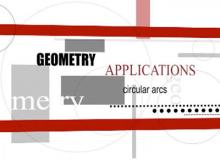
|
Closed Captioned Video: Geometry Applications: Circles, Segment 2: Circles and Arcs.The Roman Coliseum is a large elliptical structure. Yet, the Romans likely used circular arcs to build it. This segment explores the properties of circles and shows how arcs can be used to create elliptical shapes. |
Closed Captioned Video: Geometry Applications: Circles, 3 |
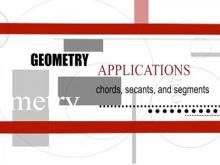
|
Closed Captioned Video: Geometry Applications: Circles, Segment 3: Chords and Inscribed AnglesThe Roman Pantheon is a domed structure that shows a keen awareness of the position of the sun throughout the year. The source of light from the top of the dome allows for the exploration of chords, inscribed angles, central angles, and intercepted arcs. |
Closed Captioned Video: Geometry Applications: Coordinate Geometry |
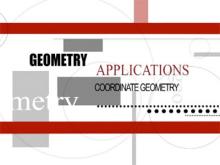
|
Closed Captioned Video: Geometry Applications: Coordinate GeometryIn this program we look at applications of coordinate geometry. We do this in the context of three real-world applications. In the first, we look at longitude and latitude as a spherical coordinate system for navigation. |
Closed Captioned Video: Geometry Applications: Coordinate Geometry, 1 |
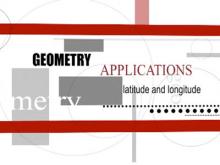
|
Closed Captioned Video: Geometry Applications: Coordinate Geometry, Segment 1: Longitude and Latitude.Greenwich, England, is the location of the Prime Meridian and offers a point of departure for a discussion of the longitude and latitude coordinate system. |
Closed Captioned Video: Geometry Applications: Coordinate Geometry, 2 |
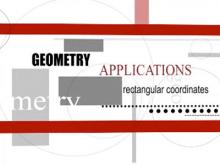
|
Closed Captioned Video: Geometry Applications: Coordinate Geometry, Segment 2: Rectangular Coordinates.Centuries ago a Spanish galleon, The Atocha, sank off the coast of Florida, taking its gold treasure down with it. Aside from the technology used to recover the treasure, it was a rectangular coordinate system that made such an endeavor possible. |
Closed Captioned Video: Geometry Applications: Coordinate Geometry, 3 |
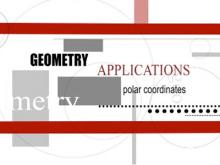
|
Closed Captioned Video: Geometry Applications: Coordinate Geometry, Segment 3: Polar Coordinates.The Guggenheim Museum in New York City has a spiral shape that is an example of a polar coordinate graph. This shape, found often in nature, is a way to understand the Fibonacci Sequence. |
Closed Captioned Video: Geometry Applications: Points and Lines |
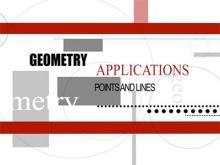
|
Closed Captioned Video: Geometry Applications: Points and LinesIn this program we explore the properties of points and lines. We do this in the context of two real-world applications. In the first, we go to CERN and learn about the Large Hadron Collidor. |
Closed Captioned Video: Geometry Applications: Points and Lines, 1 |
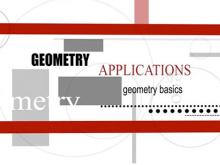
|
Closed Captioned Video: Geometry Applications: Points and Lines, Segment 1: IntroductionOur understanding of geometry owes much to the ancient Greeks. We visit the ancient Acropolis and explore some of its geometric secrets. |
Closed Captioned Video: Geometry Applications: Points and Lines, 2 |
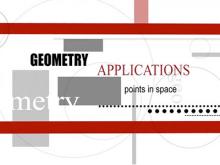
|
Closed Captioned Video: Geometry Applications: Points and Lines, Segment 2: PointsGeometric objects are abstractions that seem to have a connection to real world objects. |
Closed Captioned Video: Geometry Applications: Points and Lines, 3 |
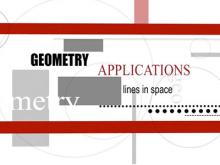
|
Closed Captioned Video: Geometry Applications: Points and Lines, Segment 3: LinesMany cities are laid out in a rectangular grid and are examples of intersecting lines and rays. We visit the city of Houston to investigate the geometric nature of the city grid in its downtown area. |
